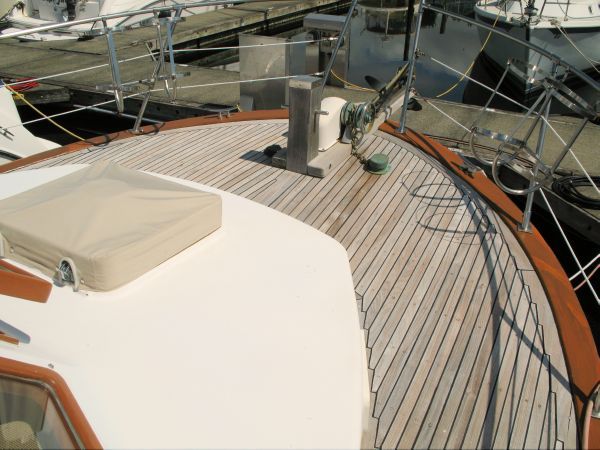Adelaide
Senior Member
Cetol Touch Up
Hello all,
I have a question for those who use Cetol. The Previous Owner states that he applies "Cetol Light". The toe rail has spots of uneven Cetol where I can see a different layer underneath. The layer underneath has much more "grain" to it than the Cetol, which has lost the grain natural look to it.
Certainly I would love to one day sand everything down and start over, but I have to pace myself. The Cetol in all other areas (Hand rails, doors etc...) looks good enough.
So the questions.....
1. what happened to where a lower coat had wood grain look and the upper coats look more like a painted surface?
2. Can I just sand the low spots and add more Cetol Light to those areas, to build it back up? What's the fix, if there is one?
I will get some more pictures and post them later. But here is one that will get you started:

Thanks.
Hello all,
I have a question for those who use Cetol. The Previous Owner states that he applies "Cetol Light". The toe rail has spots of uneven Cetol where I can see a different layer underneath. The layer underneath has much more "grain" to it than the Cetol, which has lost the grain natural look to it.
Certainly I would love to one day sand everything down and start over, but I have to pace myself. The Cetol in all other areas (Hand rails, doors etc...) looks good enough.
So the questions.....
1. what happened to where a lower coat had wood grain look and the upper coats look more like a painted surface?
2. Can I just sand the low spots and add more Cetol Light to those areas, to build it back up? What's the fix, if there is one?
I will get some more pictures and post them later. But here is one that will get you started:

Thanks.
Last edited:
